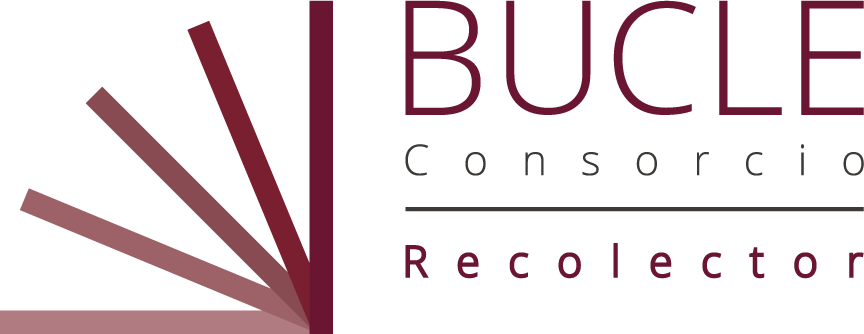Compartir
Título
Nuevos materiales, algoritmos de caracterización y recubrimientos para aplicaciones espaciales en el ultravioleta lejano y extremo
Autor(es)
Director(es)
Materia
Tesis y disertaciones académicas
Universidad de Salamanca (España)
Tesis Doctoral
Academic dissertations
Radiación ultravioleta
Astronomía
Clasificación UNESCO
2209.22 Radiación ultravioleta
2103 Astronomía óptica
2209.14 Propiedades ópticas de los sólidos
Fecha de publicación
2015
Resumen
[EN]Some natural processes produce photons whose wavelengths are in the spectral
ranges called extreme ultraviolet (EUV, 10-100 nm) and far ultraviolet (FUV, 100-200 nm),
regions where most of the materials in nature turn absorbent. The manipulation and detection
of these photons are fundamental in order to obtain information about the processes which
generate them. Nowadays there is an increasing demand of optical instrumentation that
requires more efficient optical coatings. Accurate optical constants in the FUV/EUV are needed
for the design of coatings. The main goal of the present work has been to provide new optical
coatings for the EUV/FUV ranges along with accurate and extensive optical data sets.
Regarding optical constant research, in this work we have continued a research
initiated by GOLD in the 1990s, aimed to find and characterize materials whose optical
constants are suitable for the development of new coatings in the EUV/FUV ranges. Sr, Lu and
SrF2 have been characterized in this work. With Lu, we have already completed the
characterization of all the lanthanides, except Pm, that has not stable isotope. SiC and B4C had
been previously characterized in the EUV/FUV range by GOLD; at this time we have also
characterized these materials in the visible and ultraviolet ranges and obtained self-consistent
optical constants in a wide spectrum, which will enable the design of new optical coatings for
the EUV/FUV ranges with additional restrictions in the visible or ultraviolet.
Not only have we characterized new materials, but also we have developed new tools
for the optical-constant consistency analysis, along with new mathematical models to fit them.
Hence, once the optical constants were experimentally determined, it is necessary to check
their consistency. In this work, we have developed a new algorithm to evaluate the
consistency of the optical-constant data sets. The new algorithm is able to give more weight to
one spectral range over the others in the consistency analysis. On the other hand, we have
developed a new algorithm to generate new analytical models starting from empirical and
non-analytical models which are frequently used to fit experimental data.
Taking advantage of the previously described tools, we have developed and/or
characterized the following optical coatings for the EUV/FUV range:
i) New narrowband reflective coatings for the Hydrogen Lyman β line (102.57 nm);
Observations in the latter line may unveil essential information for solar physics and
astrophysics. These coatings were developed with the strong constraint to reject the Hydrogen
Lyman α line (121.57 nm), which is the most intense line in solar observation and hence it
could mask the weaker Lyman β line. The key parameter of these new coatings is that they
have a high Lyman β-to- Lyman α reflectance ratio.
ii) New transmittance coatings tuned at either the Oxygen I line (135.6 nm) or the
central part of the N2 Lyman-Birge-Hopfield band (around 140-180 nm), with additional
constraints in the near ultraviolet and visible ranges. These coatings were developed for the
engineering model of the “Atmospheric Photometer” (AP) instrument, aboard the spacecraft
Feng-Yun 3D (FY-3D), developed by China, and scheduled to be launched in 2016.
iii) We have characterized in the 4-90 nm range the EUV flight witnesses of
“Atmospheric Imaging Assembly” (AIA) instrument, aboard “Solar Dynamic Observatory”
(SDO), which is in orbit since 2010. This calibration is expected to further improve the
understanding of the AIA instrument response and the corresponding interpretation of data
furnished by AIA. [ES]Ciertos fenómenos físicos de la naturaleza producen fotones con longitudes de onda
comprendidas en los intervalos espectrales llamados ultravioleta extremo (EUV, 10-100 nm) y
lejano (FUV, 100-200 nm), regiones donde la mayoría de los materiales de la naturaleza se
tornan fuertemente absorbentes. La manipulación y detección de dichos fotones es
fundamental para obtener información acerca de los procesos que los generan. Esto ha creado
una demanda creciente de instrumentación óptica que, a su vez, requiere de unos
recubrimientos eficientes. Para el diseño de los recubrimientos en el EUV/FUV es necesario
disponer de constantes ópticas precisas de los materiales que van a ser empleados. El objetivo
de este trabajo ha sido proporcionar a la comunidad científica nuevos recubrimientos para el
EUV/FUV así como conjuntos extensos y congruentes de constantes ópticas para su diseño.
En el campo de la obtención de las constantes ópticas hemos seguido una línea de
investigación iniciada en GOLD en la década de los 90 que consiste en la búsqueda y
caracterización de materiales con propiedades prometedoras en el EUV/FUV. Así, hemos
caracterizado los siguientes materiales en un amplio intervalo del espectro electromagnético:
Sr, Lu y SrF2. Con la caracterización del Lu se ha completado el análisis de las constantes
ópticas de todos los lantánidos (Exceptuando el Pm, por no poseer isótopos estables). El SiC y
el B4C ya habían sido previamente caracterizados en el EUV/FUV; se han caracterizado aquí en
el visible y ultravioleta cercano para diseñar ciertos recubrimientos en el EUV/FUV que
requieren de restricciones adicionales en el visible y aledaños.
La contribución en el campo de las constantes ópticas también incluye la evaluación de
las constantes obtenidas y el desarrollo de modelos de ajuste. Obtenidos los conjuntos de
constantes ópticas experimentalmente, es necesario disponer de herramientas para analizar
su congruencia global. Para ello hemos desarrollado nuevos algoritmos que, en la evaluación
de la congruencia de las constantes ópticas obtenidas, asignan más peso al intervalo espectral
deseado. Otro objetivo ha sido el desarrollo de modelos que describen las constantes ópticas
de materiales en función de unos pocos parámetros. En esa línea, hemos obtenido un nuevo
algoritmo para generar modelos analíticos a partir de los modelos empíricos que se utilizan
habitualmente en el ajuste de datos experimentales de constantes ópticas.
Con las constantes ópticas de los materiales anteriores y de otros caracterizados en el
pasado, hemos llevado a cabo el desarrollo y caracterización de los siguientes recubrimientos
para el EUV/FUV:
i) Nuevos recubrimientos eficientes de banda estrecha para la línea Lyman β del
Hidrógeno (102.57 nm) de interés en física solar y astrofísica. Estos recubrimientos, que
operan por reflexión, rechazan además la línea Lyman α del Hidrógeno (121.57 nm), que es
más intensa en las observaciones de la corona solar y puede enmascarar la línea Lyman β.
ii) Nuevos recubrimientos de transmitancia para la línea OI del Oxígeno (135.6 nm) y la
banda del N2 Lyman-Birge-Hopfield (140-180 nm) y con restricciones adicionales en el visible y
ultravioleta cercano. Se trata de un recubrimiento para el instrumento “Atmospheric
Photometer” (AP) a bordo del satélite chino de observación de la tierra Feng-Yun 3D, que está
previsto poner en órbita en 2016.
iii) Caracterización en el intervalo 4-90 nm de todos los testigos de vuelo de los
recubrimientos de reflectancia para el EUV del instrumento “Atmospheric Imaging Assembly”
(AIA) a bordo del satélite “Solar Dynamic Observatory” (SDO), en órbita desde 2010. Esta
calibración permitirá un mejor análisis de los datos obtenidos por el AIA.
URI
DOI
10.14201/gredos.127862
Colecciones












